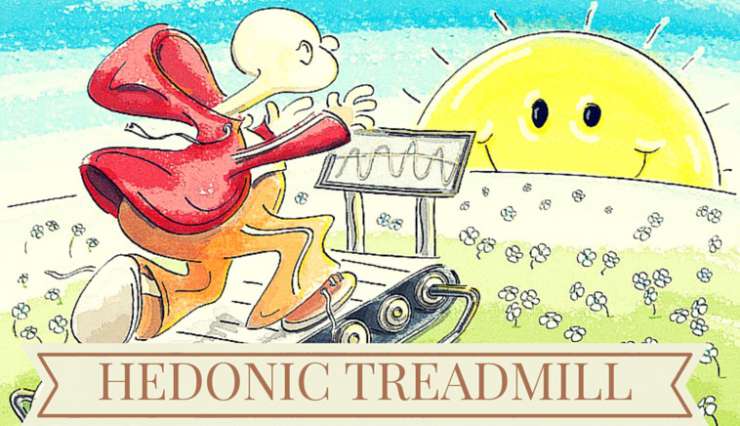

This finding suggested that new stimuli did not have to only surpass one’s own individual ‘neutral’ level of happiness, but also other people’s happiness levels. The psychologists believed that hedonic adaptation had serious individual and societal implications, as they found that new events were compared not only to one’s own past experiences, but also compared to the experiences of people around them.

Brickman and Campbell suggested that the only way to ensure consistent happiness is to continuously experience new positive events.

Because happy and sad events incorporate into the baseline level, joy and dissatisfaction both fade over time. Brickman and Campbell also posited that fleeting moments of happiness or sadness could actually shift the baseline level of happiness up or down, therefore changing a person’s ‘neutral’ level. The hedonic adaptation level was thus said to be a baseline level of happiness.

7 In this paper, Brickman and Campbell suggested that people experience pleasure or sadness when faced with an event or stimulus that is more positive or negative than their current hedonic adaptation level. The hedonic adaptation theory was first proposed by Canadian psychologist Philip Brickman and American psychologist Donald Campbell in their 1971 paper, “Hedonic Relativism and Planning the Good Society. We adapt to the events in our life, which is why the hedonic treadmill is often also referred to as hedonic adaptation. This means we can bounce back fairly quickly after something bad happens, but it also means that when an event brings us a lot of joy, that feeling of happiness will only last a little while. The hedonic treadmill suggests that we are relatively stable creatures and that our happiness levels don’t fluctuate over the long term. It is a phenomenon that suggests that people’s level of happiness, after being moved in either a positive or negative direction, eventually returns to a baseline level, where it was before the experiences causing the rise or dip. The cycle of returning to a ‘normal’ level of happiness is called the hedonic treadmill. Briefly, they may have worked – but eventually your level of happiness returned to normal and you began to desire new things. 2 However, if you look around at what you already do have, there was likely a time where you thought that once you obtained those things, you’d be happier. How often do you find yourself sitting at home, dreaming of obtaining something you desire? It could be a better job, a better car, or a better apartment, all with the accompanying thought that if you could just get it, you’d be so much happier.


 0 kommentar(er)
0 kommentar(er)
